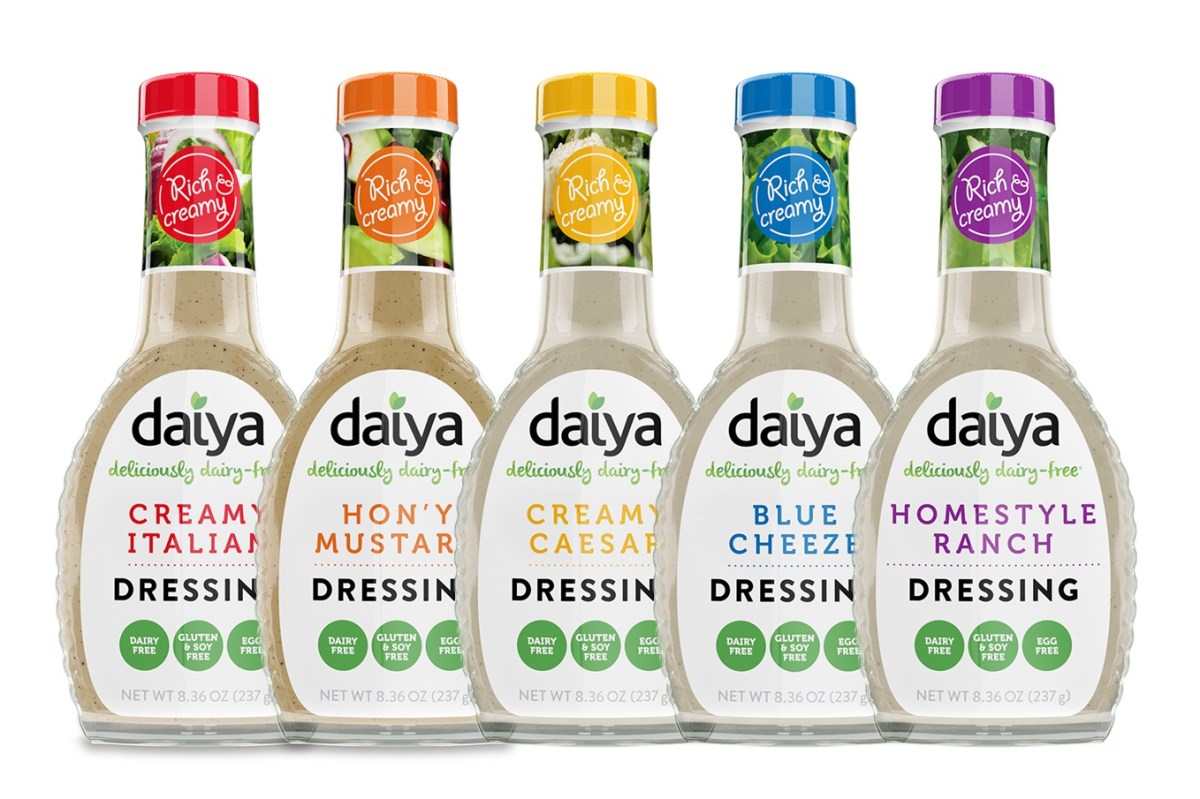Imagine a world where creamy pasta sauces, rich Alfredo, and decadent mushroom gravy are all within reach, even with dairy and soy allergies. This isn’t a dream; it’s the delicious reality unlocked by exploring plant-based alternatives. Dive into a vibrant world of creamy sauces crafted from the earth’s bounty, where cashew cream whispers of subtle sweetness, coconut milk lends a tropical twist, and sunflower seeds offer a nutty richness. We’ll uncover the secrets to achieving velvety textures and intensely flavorful sauces, transforming limitations into culinary adventures.
This guide provides a comprehensive exploration of creating allergen-free creamy sauces, focusing on three powerhouse bases: cashew, coconut, and sunflower seed creams. We’ll delve into the nuances of each, comparing their flavor profiles and nutritional benefits. Learn how to expertly utilize various plant-based thickeners—from arrowroot powder’s gentle thickening to xanthan gum’s powerful emulsifying properties—to achieve the perfect consistency. Finally, we’ll unlock the magic of flavor boosters, transforming simple sauces into complex culinary masterpieces, suitable for any cuisine from Italian to Indian.
Flavor Boosters for Richness and Depth
Elevating dairy-free and soy-free creamy sauces to a level of decadent richness requires a strategic approach to flavor enhancement. The right combination of herbs, spices, and other flavoring agents can transform a simple sauce into a complex and satisfying culinary experience. This section explores key flavor boosters and their application in creating luxuriously creamy plant-based sauces.
Flavor Boosters: Enhancing Creamy Sauces
Five flavorful additions significantly improve the depth and richness of dairy-free creamy sauces. These additions offer diverse flavor profiles that complement various sauce types, adding layers of complexity and interest. Careful selection and precise use are crucial to achieve the desired effect.
| Flavor Booster | Flavor Profile | Sauce Type Compatibility |
|---|---|---|
| Nutritional Yeast | Nutty, cheesy, umami; adds a savory depth and subtle tang. | Alfredo, cheese sauces, mac and cheese |
| Sun-dried Tomatoes (pureed) | Intensely sweet, tangy, and umami; adds a vibrant, concentrated tomato flavor. | Tomato-based sauces, pasta sauces |
| Roasted Garlic | Sweet, mellow, and subtly pungent; provides a rich, rounded flavor. | Creamy mushroom sauces, vegetable sauces |
| White Miso Paste | Savory, umami, slightly sweet; adds a depth of flavor and creamy texture. | Creamy vegetable sauces, mushroom sauces, Asian-inspired sauces |
| Fresh Thyme or Sage | Earthy, slightly peppery (thyme); warm, slightly bitter (sage); adds aromatic complexity. | Creamy mushroom sauces, vegetable sauces, pasta sauces |
Creating a Rich Creamy Tomato Sauce
A vibrant, creamy tomato sauce, free from dairy and soy, can be achieved by leveraging the power of flavor boosters. Imagine a sauce with a deep crimson hue, its surface shimmering with a subtle sheen from the plant-based cream. The aroma is rich with roasted garlic and sun-dried tomato, hinting at the complex flavors within. The following recipe highlights the role of flavor boosters in achieving this richness.
Begin by roasting a head of garlic until deeply caramelized, its sweetness intensifying with each minute in the oven. Puree sun-dried tomatoes, their intense flavor providing a robust base. Sauté finely chopped shallots until translucent, then add the roasted garlic and sun-dried tomato puree. Stir in a can of crushed tomatoes, a splash of vegetable broth, and a generous pinch of dried oregano. Simmer gently, allowing the flavors to meld and deepen. Finally, stir in a plant-based cream alternative (cashew cream, coconut cream, or tofu cream) and a tablespoon of nutritional yeast. The nutritional yeast lends a subtle cheesiness, while the roasted garlic and sun-dried tomatoes contribute a deep, savory richness. The final touch is a sprinkle of fresh basil, its vibrant green contrasting beautifully against the deep red of the sauce. The result is a creamy tomato sauce that bursts with flavor and texture.
Step-by-Step Creamy Sauce Recipes (without dairy or soy)

Now that we’ve explored the foundational elements of creating creamy sauces without dairy or soy, let’s dive into the practical application with three detailed recipes. Each recipe utilizes a different nut or seed butter to achieve a luxuriously creamy texture and rich flavor profile, all while remaining completely free of common allergens. These recipes are designed for ease of preparation, offering delicious and satisfying results.
Creamy Cashew Pasta Sauce
This recipe delivers a rich and subtly sweet cashew-based sauce perfect for pasta dishes. The cashews create a velvety texture, while the added lemon juice and garlic provide a bright, savory counterpoint. The process involves soaking the cashews to ensure a perfectly smooth and creamy consistency.
1. Soak the Cashews: Place 1 cup of raw cashews in a bowl and cover with boiling water. Let them soak for at least 30 minutes, or up to 4 hours for optimal softness. This step is crucial for achieving a smooth sauce. The cashews will visibly plump up and soften.
2. Blend the Sauce: Drain the soaked cashews and add them to a high-speed blender along with 1/2 cup of vegetable broth, 2 tablespoons of nutritional yeast (for cheesy flavor), 2 cloves of garlic, 1 tablespoon of lemon juice, 1/4 teaspoon of salt, and 1/4 teaspoon of black pepper. Blend until completely smooth and creamy, adding more broth if needed to reach your desired consistency. The mixture will transform from a chunky paste into a fluid, creamy sauce.
3. Simmer (Optional): For an even richer flavor, transfer the blended sauce to a saucepan and simmer over low heat for 5-7 minutes, stirring occasionally. This gentle simmering will deepen the flavors and slightly thicken the sauce. The sauce will develop a slightly glossy sheen as it simmers.
4. Serve: Toss the sauce with your favorite cooked pasta and garnish with fresh herbs, such as basil or parsley, for a vibrant and flavorful finish. The final sauce should have the consistency of a thick cream, coating the pasta evenly.
Creamy Vegan Alfredo Sauce with Coconut Cream
This recipe uses full-fat coconut cream as its base, resulting in a luxuriously rich and decadent Alfredo sauce without any dairy. The key to a smooth emulsion is careful blending and the addition of a starchy element to help thicken the sauce.
1. Prepare the Coconut Cream: Open a can of full-fat coconut cream and scoop out the thick, solidified cream from the top, leaving the watery liquid behind. The cream should be firm and white.
2. Blend the Sauce: Combine the coconut cream with 1/4 cup of cooked pasta water (or vegetable broth), 2 tablespoons of nutritional yeast, 1 tablespoon of lemon juice, 1 clove of garlic, 1/4 teaspoon of salt, and 1/4 teaspoon of black pepper in a high-speed blender. Blend until completely smooth and emulsified. The mixture should be thick and creamy, with a consistency similar to heavy cream.
3. Thicken (Optional): If the sauce is too thin, gently simmer it in a saucepan over low heat for a few minutes, stirring constantly, until it reaches your desired thickness. The sauce will gently thicken as it simmers, and you may notice a slight separation at first, which will smooth out with stirring.
4. Serve: Toss the sauce with cooked pasta and garnish with fresh herbs or roasted vegetables. The final sauce should have a rich, creamy texture, clinging beautifully to the pasta.
Creamy Mushroom Sauce with Sunflower Seed Butter
This recipe offers a hearty and earthy mushroom sauce using sunflower seed butter as a surprising yet effective creamy base. The earthy notes of the mushrooms are beautifully complemented by the nutty flavor of the sunflower seed butter.
1. Sauté the Mushrooms: Sauté 1 pound of sliced mushrooms in 1 tablespoon of olive oil until they are softened and browned. The mushrooms will release their liquid, creating a rich base for the sauce.
2. Blend the Sauce: Add 1/4 cup of sunflower seed butter, 1/4 cup of vegetable broth, 1 tablespoon of nutritional yeast, 1 tablespoon of lemon juice, 1 clove of garlic, 1/4 teaspoon of salt, and 1/4 teaspoon of black pepper to a high-speed blender. Add the sautéed mushrooms. Blend until completely smooth and creamy. The sauce will start thick, then become smoother as the ingredients blend.
3. Adjust Consistency: If the sauce is too thick, add more broth, a tablespoon at a time, until it reaches your desired consistency. If too thin, simmer gently until thickened. The final consistency should be a smooth, creamy sauce, neither too thick nor too runny.
4. Serve: Serve the sauce over pasta, polenta, or roasted vegetables. The final sauce will have a rich, nutty, and slightly earthy flavor, perfectly coating whatever you choose to serve it with.
Troubleshooting Common Issues in Dairy-Free Creamy Sauce Making
Creating luscious, dairy-free creamy sauces can be a rewarding culinary adventure, but it’s not always smooth sailing. Several common pitfalls can lead to less-than-perfect results, from grainy textures to unsightly separation. Understanding these challenges and their solutions is key to achieving creamy sauce perfection every time. This section will address common problems and provide practical solutions for achieving the desired consistency and flavor.
Sauce Separation
Separation, where the sauce splits into oily and watery layers, is a frequent issue in dairy-free sauces. This often occurs when the emulsifying agents, responsible for binding the ingredients together, are not properly incorporated or are overwhelmed by other components. Preventing separation involves careful attention to temperature and the gradual addition of liquids. For example, when using a cashew cream base, ensure the cashews are thoroughly blended into a smooth paste before adding any hot liquids. Slowly whisking in the hot liquid while the cashew cream is still cool prevents immediate separation. Similarly, when using starches as thickeners, incorporate them slowly into a cold liquid before adding to the hot sauce to prevent clumping, which can contribute to separation. A well-incorporated roux (a mixture of fat and flour) can also prevent separation by providing a stable base for the sauce. Imagine a perfectly smooth, velvety sauce, unmarred by any oily sheen or watery residue—that’s the goal, and careful technique is the key to achieving it.
Clump Formation
Lumpy or clumpy sauces are another common problem, often stemming from improperly incorporated thickeners like cornstarch or arrowroot powder. These starches need to be fully dispersed in a cold liquid before being added to the hot sauce to prevent clumping. A common solution is to create a slurry: mix the starch with a small amount of cold liquid to form a smooth paste before slowly whisking it into the simmering sauce. This prevents the starch from immediately thickening and clumping together. Visualize the difference: a smooth, homogenous sauce versus one marred by unsightly lumps. The slurry method ensures a perfectly smooth result. Another approach involves using a whisk continuously as you add the thickener, preventing the formation of clumps.
Lack of Creaminess
Achieving a truly creamy texture in dairy-free sauces requires careful selection of ingredients and precise techniques. The type of thickener plays a crucial role. Some thickeners, like coconut cream or blended nuts, naturally contribute to creaminess, while others, like starches, require careful handling to avoid a gummy texture. Temperature control is also essential. Overheating can break down the emulsifiers and lead to a less creamy sauce. Maintaining a gentle simmer rather than a vigorous boil is crucial. Furthermore, the addition of flavorful fats, such as avocado oil or coconut oil, can contribute to a richer, creamier mouthfeel. Think of the velvety texture of a well-made dairy-free Alfredo sauce – that luxurious creaminess is the result of attention to detail and the right combination of ingredients and techniques.
Unlocking the potential of dairy-free and soy-free creamy sauces is a journey of culinary discovery. By mastering the art of plant-based cream alternatives, understanding the role of various thickeners, and harnessing the power of flavor boosters, you’ll be equipped to create a stunning array of creamy sauces that are not only allergen-friendly but also bursting with flavor and texture. From rich and decadent Alfredo to vibrant tomato sauces, the possibilities are as limitless as your imagination. Embrace the challenge, experiment with different combinations, and savor the creamy, delicious results!
Quick FAQs
Can I freeze dairy-free creamy sauces?
Yes, most dairy-free creamy sauces freeze well. Allow them to cool completely before freezing in airtight containers for up to 3 months.
What if my sauce separates?
Separation can occur due to improper thickening or temperature fluctuations. Gentle heating and whisking often resolves this. Adding a small amount of xanthan gum can also help.
How long do dairy-free creamy sauces last in the refrigerator?
Refrigerated dairy-free creamy sauces typically last for 3-5 days. Ensure they are stored in airtight containers.
Are all plant-based thickeners interchangeable?
No, each thickener has unique properties. Arrowroot and cornstarch require cooking, while xanthan gum works best as a cold addition. Tapioca starch falls somewhere in between.


